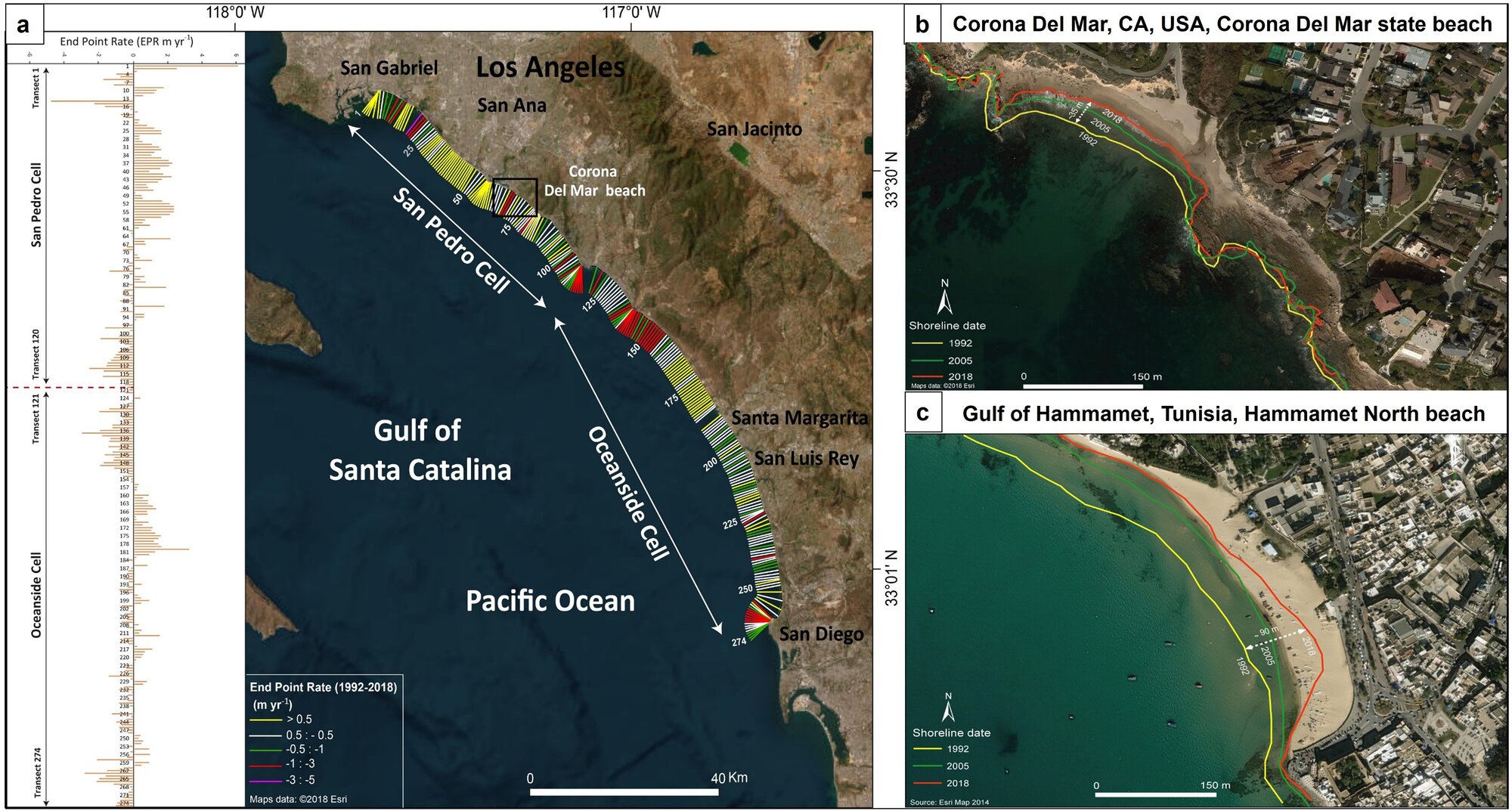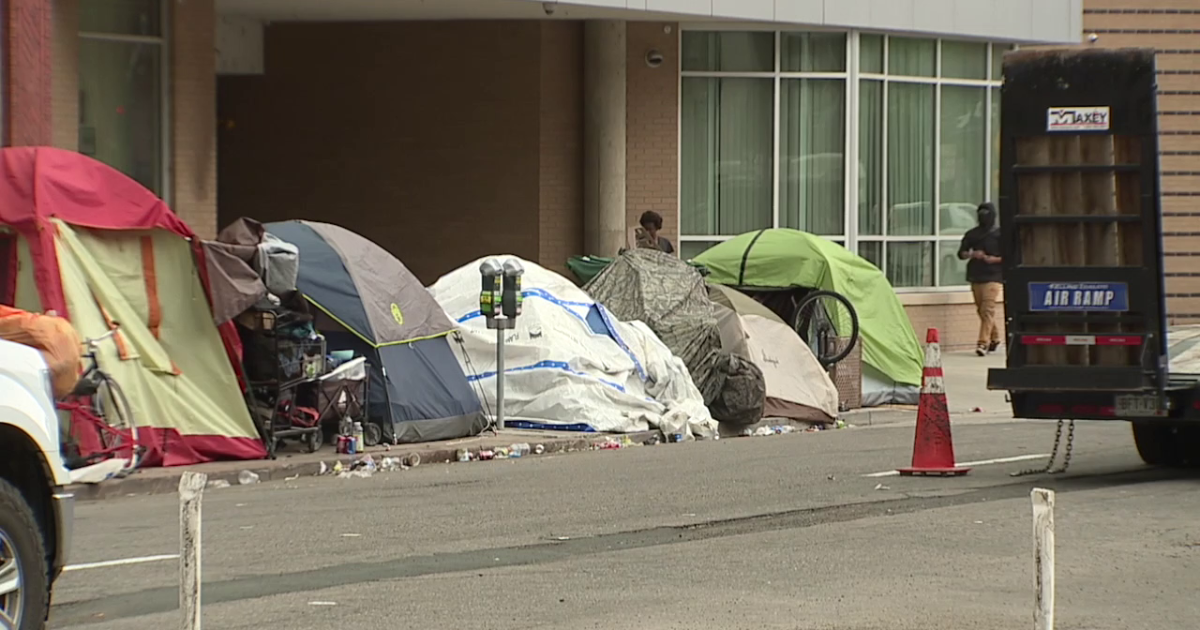California
White House vows more federal aid to reduce homelessness in 5 cities and California

WASHINGTON — Five major U.S. cities and the state of California will receive federal help to get unsheltered residents into permanent housing under a new plan launched Thursday as part of the Biden administration’s larger goal to reduce homelessness 25% by 2025.
The All Inside initiative will partner the U.S. Interagency Council on Homelessness and its 19 federal member agencies with state officials in California and local governments in Los Angeles, Chicago, Dallas, Seattle and the Phoenix metro area.
The goal is for the federal government to provide “knowledge, resources and elbow grease” to population centers where nearly half the nation’s unhoused residents live, said Susan Rice, President Joe Biden’s domestic policy advisor.
The administration will offer “tailored support” for two years to improve efforts toward housing unsheltered people in the participating communities, including embedding a federal official in each area, officials said.
In addition, teams will be deployed to help the communities obtain federal funding, establish a network of resources and identify areas where regulations can be loosened and the process for securing housing can be sped up.
Philanthropic groups and private businesses will be invited to help identify opportunities for support and collaboration, according to the administration.
More than 580,000 Americans were homeless in 2022, with 4 out of 10 of them unsheltered and sleeping on sidewalks and in tents and cars, Rice said.
“We know we cannot meaningfully address our nation’s homelessness problem without a distinct focus on unsheltered homelessness,” she said during a livestreamed announcement with the cities’ mayors and other officials.
Agencies, including the Department of Health and Human Services, Housing and Urban Development, Social Security Agency, Department of Labor, Federal Emergency Management Agency, will be involved under Thursday’s announcement to help coordinate housing opportunities.
Funding specifics were not offered, but the White House said the program will build on the $2.5 billion already allocated to prevent homelessness under the administration’s American Rescue Plan and $486 million in the Department of Housing and Urban Development funding released to local municipalities earlier this year.
Los Angeles Mayor Karen Bass said she hoped the initiative would unstick the current bottleneck plaguing her program Inside Safe, which offers homeless people motel rooms and a path to permanent housing with services. The City Council on Thursday passed the mayor’s budget, which provides $250 million for the LA initiative. It has over 1,200 enrollees so far but is moving slowly because of bureaucratic red tape.
“If anything, we know that our current system on the federal, state and county level isn’t designed for the emergency that we are facing today,” Bass, a Democrat, said.
Seattle Mayor Bruce Harrell said the White House plan will “unite our systems,” bringing solutions that are effective in some cities to other areas.
“What’s working in one city will work here because we’re dealing with the same American issues,” Harrell, a Democrat, said.
The Seattle area had the nation’s third highest population of homeless residents in 2022, after Los Angeles and New York, at more than 13,300, according to a one-night count required by the federal government.
Seattle, King County and nearby cities joined together to launch a regional homelessness authority two years ago. But many officials say the new agency has underperformed, been beset by political fights and had trouble fulfilling administrative duties such as executing contracts with service providers.
Meanwhile, the city of Phoenix is under increasing pressure to do something about a massive downtown encampment known as The Zone, where as many as 1,000 unhoused people have congregated near social services.
Democratic Gov. Katie Hobbs, a former social worker, successfully pushed for $150 million to be included in Arizona’s Housing Trust Fund in the state’s budget to shore up rent and utility assistance programs, eviction prevention, and build new shelters and affordable housing.
Biden’s All In strategy roadmap made public last December follows a 2010 effort called Opening Doors, which was the nation’s first comprehensive effort seeking to prevent and end homelessness.
___
Associated Press writers Anita Snow in Phoenix and Gene Johnson in Seattle contributed.

California
More batteries, less solar: California's solar turmoil in charts

California slashed the value of rooftop solar for customers of its three biggest utilities last year — and installations of residential solar systems in the state have fallen to near-three-year lows since then.
But drawing firm conclusions about how the controversial shift in net-metering policy will shape California’s rooftop solar market over the long term — and affect the state’s grid-decarbonization and energy-equity goals — is a lot more complicated than it looks.
Just ask Galen Barbose, staff scientist at the Department of Energy’s Lawrence Berkeley National Laboratory. Last week, he released a report compiling the latest data on California’s residential rooftop solar market, including the data point showing a marked drop in installations in the first three months of 2024.
Barbose also scrutinized battery-storage attachment rates, the distribution of solar adopters by geography and income, third-party ownership, system sizing, pricing, and installer market share. The goal was to reveal “initial empirical insights into how the market has evolved over the past year, confirming some expectations while also revealing several striking surprises,” he wrote in the report.
But “we have to be careful about not overreaching from the data over this past year,” Barbose stressed in an interview with Canary Media — because “this was a strange last year.”
A year of twists and turns for California rooftop solar
There was a huge rush to apply for and secure interconnections of rooftop solar systems to the grid in the runup to April 2023, when the legacy net-metering (NEM) tariff was officially replaced by the “net-billing tariff” (NBT) that the California Public Utilities Commission imposed on customers of Pacific Gas & Electric, Southern California Edison, and San Diego Gas & Electric.
That caused installations to spike to record levels throughout the spring and summer of 2023, as all of the projects approved under the old tariff got underway. Installations under the legacy tariff continued even through the first quarter of 2024, according to LBNL data.
Backers of the CPUC’s decision to reduce compensation for rooftop solar argue that California’s solar market remains robust — just not as overheated as during the historical jump in installations last year.
“[T]he much more generous compensation for systems installed before April 15 drove a gold rush during the first three and a half months of 2023,” Severin Borenstein, head of the Energy Institute at the University of California, Berkeley’s Haas School of Business and a foe of the state’s previous net-metering regime, wrote in a blog post last month. “Many of those early-2023 buyers would most likely have been later-2023 buyers were it not for the rush to install before April 15 and lock in NEM 2.0 rules.”
But there’s also evidence that the far less lucrative economics of the net-billing tariff have severely crimped ongoing prospects for California rooftop solar installers. The rate of installations under the new net-billing tariff have lagged historical rooftop solar installation rates, averaging about 8,000 per month over the first quarter of 2024. That’s a lower rate of rooftop solar installation than in any month under net metering going back to May 2020, according to LBNL’s data.
In November, the California Solar and Storage Association (CALSSA) reported that monthly solar sales — a more forward-looking data point than installations — fell by 77 to 85 percent between May and September of last year compared to the same months in 2022.
The trade group also warned that solar installers expected to have to lay off nearly 17,000 workers, or about 22 percent of the state’s rooftop solar workforce — a level of job losses “reminiscent of the Great Depression,” according to Bernadette Del Chiaro, CALSSA’s executive director.
LBNL’s report includes forward-looking data that backs up CALSSA’s dire forecasts. One such metric is “quote activity” — requests for price quotes from customers interested in installing solar.
Quote requests from online solar marketplace EnergySage spiked before April 2023, then fell to about 60 percent of historical levels from 2019 to 2021. “While the EnergySage marketplace may not perfectly represent the California market overall, the fact that quote activity has not meaningfully picked back up is perhaps the clearest signal yet of a substantial and sustained market contraction,” Barbose wrote in his report.
LBNL also highlighted data that appears to support a key concern of CALSSA — that the new net-billing regime is harming smaller solar installers. According to the report, only half of the roughly 2,500 companies that installed at least one solar system in the past 12 months have completed a system under the new tariff structure.
California
California advances legislation cracking down on stolen goods resellers and auto theft

The California Senate approved a bipartisan package of 15 bills Wednesday that would increase penalties for organized crime rings, expand drug court programs and close a legal loophole to make it easier to prosecute auto thefts.
One proposal would require large online marketplaces — like eBay and Amazon — to verify the identities of sellers who make at least $5,000 profit in a year, an attempt to shut down an easy way to sell stolen goods.
CALIFORNIA LAWMAKER’S MIC CUT OFF WHILE READING BILL TO END SANCTUARY STATE LAWS, SAYS DEMS ‘DON’T CARE’
“This is not a game,” said Senate President Mike McGuire, a Democrat who represents the North Coast, adding that he hopes to get the bills to Gov. Gavin Newsom’s desk within weeks. “We are working together for safer California, putting aside politics and making sure we do right for our communities.”
It normally takes months for lawmakers to deliver bills to the governor in California, but the commitment to quick actions is driven by a new get-tough-on-crime strategy in an election year that seeks to address the growing fears of voters while preserving progressive policies designed to keep people out of prison.
California state Senator Mike McGuire, D-Healdsburg, right, talks to reporters at the Capitol in Sacramento, Calif., Aug. 28, 2023. California lawmakers on Wednesday, May 22, 2024, advanced more than a dozen bills aimed at cracking down on repeat shoplifters and car thieves, part of a new get-tough-on-crime strategy that seeks to address voter concerns while preserving progressive policies to keep people out of prison. (AP Photo/Rich Pedroncelli)
Large-scale thefts, in which groups of people brazenly rush into stores and take goods in plain sight, have reached a crisis level in the state, though the California Retailers Association said it’s challenging to quantify the issue because many stores don’t share their data.
The Bay Area and Los Angeles saw a steady increase in shoplifting between 2021 and 2022, according to a study of the latest crime data by the Public Policy Institute of California. Across the state, shoplifting rates rose during the same period but were still lower than the pre-pandemic levels in 2019, while commercial burglaries and robberies have become more prevalent in urban counties, according to the study.
Assembly lawmakers also advanced several other retail theft measures Wednesday, including a bill authored by Assembly Speaker Robert Rivas taking aim at professional theft rings. It would expand law enforcement’s authority to combine the value of goods stolen from different victims to impose harsher penalties and arrest people for shoplifting using video footage or witness statements. The measure also would create a new crime for those who sell or return stolen goods and mandate online sellers to maintain records proving the merchandise wasn’t stolen and require some retail businesses to report stolen goods data.
Lawmakers also passed proposals that would crack down on cargo thefts, restore the district attorney’s authority to go after thieves and resellers who operate beyond their jurisdictions and allow retailers to obtain restraining orders against convicted shoplifters.
All the bills now head to the second chamber before they could reach Newsom’s desk in June.
The advancement of a slew of measures further cements Democratic lawmakers’ rejection to growing calls to roll back progressive policies like Proposition 47, a ballot measure approved by 60% of state voters in 2014 that reduced penalties for certain crimes, including thefts of items valued at under $950 and drug possession offenses, from felonies to misdemeanors.
CLICK HERE TO GET THE FOX NEWS APP
Money saved from having fewer people in prison, which totals to $113 million this fiscal year, has gone to local programs to fight recidivism with much success, state officials and advocates said. But the proposition has made it harder to prosecute shoplifters and enabled brazen crime rings, law enforcement officials said. An effort to reform the measure failed in 2020.
As major national stores and local businesses in California say they continue to face rampant theft, a growing number of law enforcement officials and district attorneys, along with Republican and moderate Democratic lawmakers, say California needs to consider all options, including rolling back the measure. The coalition backing the initiative last month submitted more than 900,000 signatures to put it on the November ballot. The signatures are being verified.
California
Beach erosion will make Southern California coastal living five times more expensive by 2050, study predicts

Rising sea levels and urban development are accelerating coastal erosion at an alarming rate in Southern California with significant ripple effects on the region’s economy, a USC study reveals.
The study, published in Communications Earth & Environment, predicts that Southern California’s coastal living costs will surge fivefold by 2050 as a direct result of beach erosion. This erosion will require more frequent and costly beach nourishment projects to maintain the state’s treasured shorelines, consequently driving up the cost of living along the coast.
“Our study presents compelling evidence of the rapid deterioration of Southern California’s coastal landscapes,” said Essam Heggy, a geoscientist in the Ming Hsieh Department of Electrical and Computer Engineering/Electrophysics at the USC Viterbi School of Engineering and the study’s corresponding author.
“The challenges facing Southern California mirror a growing threat shared by coastal communities worldwide. The environmental and economic implications of coastal erosion reach far beyond California’s shores and demand interdisciplinary, global solutions,” he said.
Coastal erosion: Cost of living sure to surge as sandy beaches disappear
To predict future changes along California’s sandy coastlines, the researchers focused on the Gulf of Santa Catalina, which stretches over 150 miles from the Palos Verdes Peninsula in Los Angeles County to the northern tip of Baja California in Mexico.
They used a combination of historical and recent satellite images as well as advanced algorithms to analyze coastline movement and predict future erosion based on different trends and environmental factors.
The study predicts a tripling of erosion rates by 2050, increasing from an average of 1.45 meters per year to 3.18 meters by 2100. Consequently, the annual sand requirement for beach nourishment could triple by 2050, with costs rising fivefold due to the global increase in sand prices. This will exacerbate economic and logistical pressures on coastal communities.
Beach nourishment is adding sand to an eroded beach to rebuild it and create a wider barrier against waves and storms.
“Our investigation suggests that coastal problems start inland due to the rapid growth of cities along the coast, which compromise inland sediment replenishment of sandy beaches,” said Heggy, whose research focuses on understanding water evolution in Earth’s arid environments.
“As our beaches shrink, the cost of maintaining them will rise. Finding innovative solutions is key to securing a sustainable future for our shores and local economies,” he said.
Coastal erosion in California: A case study for a global problem
Coastal cities in Southern California and those in North Africa bordering the Mediterranean Sea face a common challenge: a semi-arid climate year-round coupled with the growing threats of rising sea levels and eroding shorelines.
A significant portion of Earth’s landmass, roughly 41%, falls under arid or semi-arid classifications, and these areas support over a third of the global population.
To understand this global challenge, the researchers focused on two specific locations: Corona del Mar in Orange County, Calif.—an example of the typical Southern California coastline—and Hammamet North Beach in Tunisia. Both are densely populated and share similar climates, prone to increasing droughts, flash floods and unpredictable rainfall patterns. These characteristics mirror the challenges faced by countless coastal communities worldwide.
The findings showed that the average rate of shoreline retreat in these areas varies. In Southern California, beaches are receding between 0.75 and 1.24 meters per year. In Hammamet North Beach, the retreat rate ranges from 0.21 to about 4.49 meters annually.
“While beach nourishment can temporarily combat erosion, however, it presents significant challenges for developing countries,” said Oula Amrouni, a sedimentologist at the National Institute of Marine Sciences and Technologies at the University of Carthage, Tunis, Tunisia, and one of the study’s co-authors.
“The high cost of acquiring the right sand, with the specific grain size, quality and composition, and the technical complexity of extracting and laying it are major hurdles. Additionally, worsening erosion in previously stable areas compels more frequent nourishment projects, straining already limited budgets and leading to unplanned expenditures for many communities.”
More information:
Oula Amrouni et al, Shoreline retreat and beach nourishment are projected to increase in Southern California, Communications Earth & Environment (2024). DOI: 10.1038/s43247-024-01388-6
Provided by
University of Southern California
Citation:
Beach erosion will make Southern California coastal living five times more expensive by 2050, study predicts (2024, May 22)
retrieved 22 May 2024
from https://phys.org/news/2024-05-beach-erosion-southern-california-coastal.html
This document is subject to copyright. Apart from any fair dealing for the purpose of private study or research, no
part may be reproduced without the written permission. The content is provided for information purposes only.
-

 World1 week ago
World1 week agoPro-Palestinian university students in the Netherlands uphold protest
-

 Politics1 week ago
Politics1 week agoReports of Biden White House keeping 'sensitive' Hamas intel from Israel draws outrage
-

 Politics1 week ago
Politics1 week agoSouthern border migrant encounters decrease slightly but gotaways still surge under Biden
-

 Politics1 week ago
Politics1 week agoWhite House walks diplomatic tightrope on Israel amid contradictory messaging: 'You can't have it both ways'
-

 World1 week ago
World1 week agoSlovakia PM Robert Fico in ‘very serious’ condition after being shot
-

 Politics1 week ago
Politics1 week agoDem newcomer aims for history with primary win over wealthy controversial congressman
-

 Politics1 week ago
Politics1 week agoJill Biden tells Arizona college graduates 'community colleges should be free in America'
-

 News1 week ago
News1 week agoDespite state bans, abortions nationwide are up, driven by telehealth




















